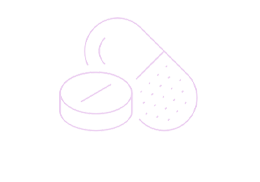Common Questions
Common Questions about Triamcinolone Acetonide (TRIANEX)
What is the difference between 0.05 triamcinolone acetonide ointment and other forms of the medicine?Triamcinolone acetonide is available in various forms and strengths. The ointment is best for dry skin as it contains a light mineral oil NF and forms a thick protective layer on the skin. On the other hand, the cream is easier to spread on oily or hairy skin. The aerosol spray is useful for the scalp or if you want to avoid getting the medicine on your hands. The dental paste is used to apply triamcinolone acetonide on sores inside the mouth. |
Where should you not apply triamcinolone acetonide cream?You should not apply triamcinolone acetonide cream on broken or infected skin. Also, you should avoid applying topical corticosteroids in delicate areas like the face, underarms, or groin unless asked to do so by a healthcare provider. |
How long can you use triamcinolone acetonide?You should use triamcinolone acetonide for 7 days. This is usually enough to treat symptoms of common skin conditions. If you don’t see any improvement in your symptoms after 7 days, call your doctor. Do not continue using the medicine unless advised by your doctor. |
What is the difference between triamcinolone and hydrocortisone?Both triamcinolone acetonide and hydrocortisone are topical corticosteroids. However, they differ in potency. Triamcinolone is a medium to high potency steroid while hydrocortisone is a low to medium potency steroid. Lower strengths of hydrocortisone are available over-the-counter while triamcinolone is prescription only. Hydrocortisone can be used on larger areas of skin and thin skin including the face. |
Is triamcinolone an antifungal?Triamcinolone is not an antifungal. It belongs to a group of drugs called topical corticosteroids. However, combination medications of triamcinolone and antifungal medicines like nystatin (Mycolog-II, Mytrex) are available to treat fungal infections. Keep in mind that prolonged use or overuse of triamcinolone can increase the risk of fungal infections in the treated area. |
What is the price of triamcinolone acetonide without insurance?Without insurance, triamcinolone acetonide can be as high as $24.00, but with a free BuzzRx prescription discount coupon, you could pay as low as $6.99 for the most common version of this medication. Use the BuzzRx drug price look-up tool to find the lowest discounted price, and be sure to enter the correct dosage, form, and quantity for the most accurate pricing. While generics tend to have the best savings, you can also use your BuzzRx card and coupons to purchase brand-name versions. It never hurts to ask your pharmacist to try BuzzRx when filling or refilling any of your prescription drugs—whether you have insurance or not. |
What is the price of triamcinolone acetonide with insurance?Ask your pharmacist or insurance provider for your copay price on triamcinolone acetonide. Copay amounts vary depending on the type of insurance plan you have and if there is a deductible to reach before prescription drug coverage begins. You could save up to 80% on your prescription medication with a free BuzzRx discount coupon for triamcinolone acetonide. When using the BuzzRx lookup tool to find the price of your medicine, be sure to enter the correct dosage, form, and quantity to receive the most accurate discounted pricing. It never hurts to ask your pharmacist to try BuzzRx when filling or refilling any of your prescriptions—whether you have insurance or not. |

SOCIAL